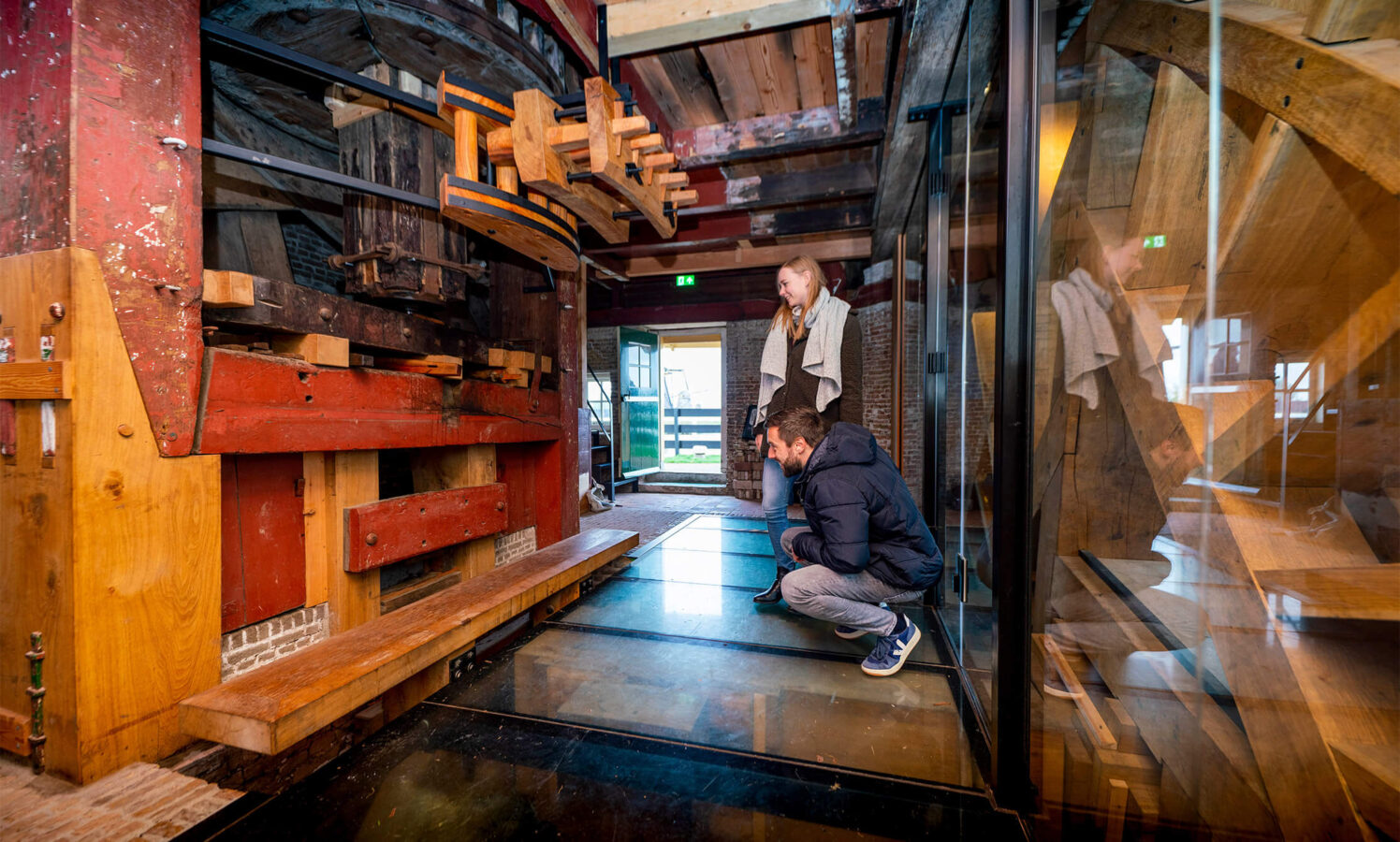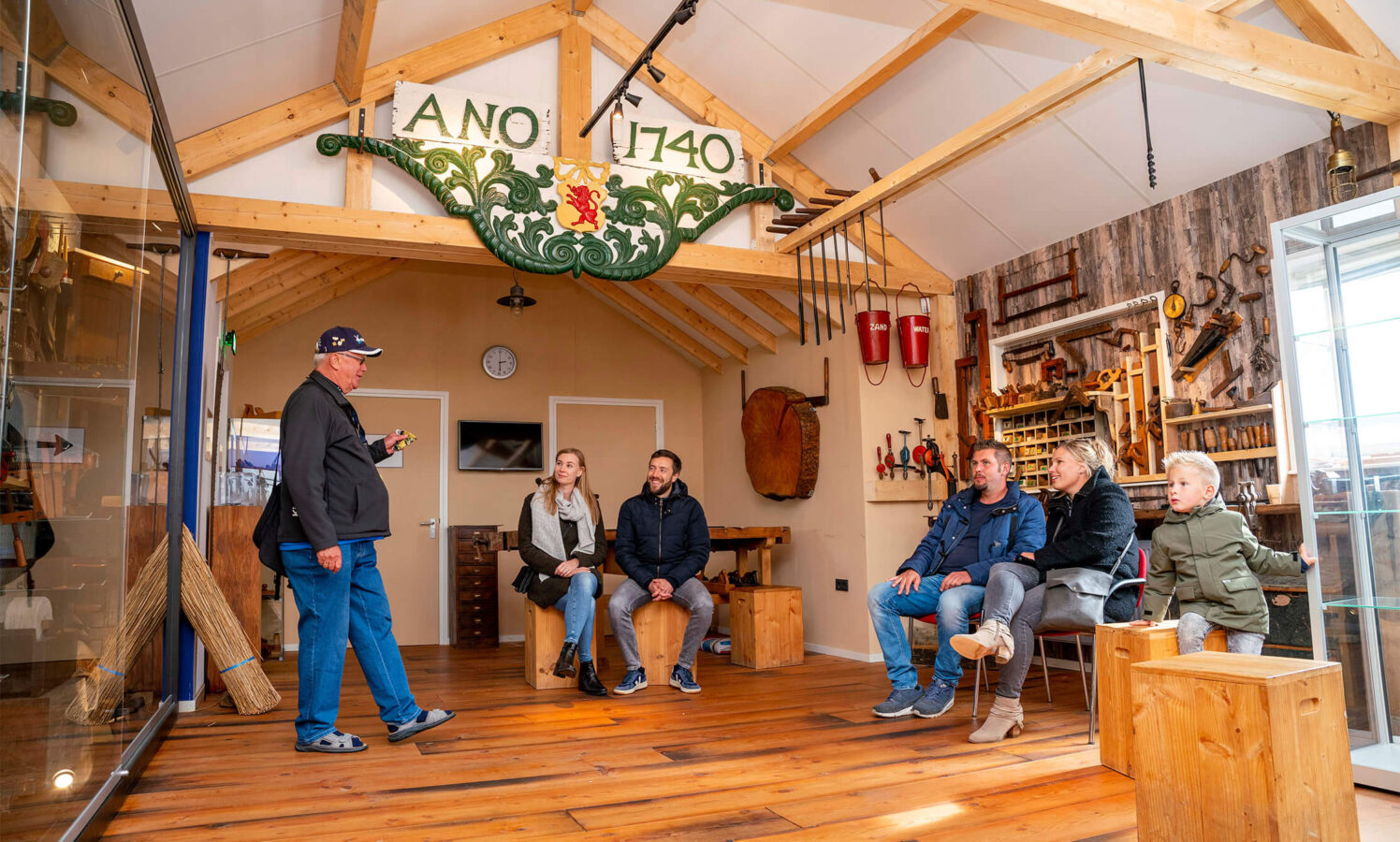
The interior is impressive.
Mill number 4 of the Overwaard was absolutely unique in the world. It was the only mill capable of pumping water in two directions. And to think that the construction of the two-way drainage mill was not a ingeniously thought-out plan, but purely improvisation. The decision to equip the fourth mill of the Overwaard with not one, but two scoop wheels was made at the end of the 18th century, after another mill burned down, urgently requiring additional milling capacity.

The interior is impressive.
On July 17, 1739, the eight windmills of the Overwaard quay were commissioned. Just two weeks later, a polder windmill that was already located at the Overwaard was lost in a fire. Rather than reconstructing this mill, it was decided that the fourth mill at Overwaard would get an overhaul, featuring twin scoop wheels capable of draining the high basin in summer. This was a much cheaper solution. The mill’s history can be divided into two periods: two-way drainage mill (1740 – 1800), and basin drainage mill (1800 – 1950). In the dual scoop wheel period, the miller only had a tiny bit of space left to live in. After the second scoop wheel was removed by the end of the eighteenth century, the space was enlarged and used as a living room. All other mills in Kinderdijk have only one scoop wheel. The second wheel allowed the two-way drainage mill to drain the water out the Overwaard Upper Basin. This in turn opened up the drained land for use as cattle pasture.

The guide giving guests more information in the education shed.
The Upper Basin consists of meadows enclosed by dikes, which still features visible ditches and vegetation. The raising of dikes around the basin marks an important moment the history of the District Water Board. At the time, the fertile pastures were not just intended for water storage, but also for cattle farming. The miller responsible for this area was paid more than his colleagues because he had to make sure the Upper Basin remained dry throughout the summer while the other millers had easier jobs.